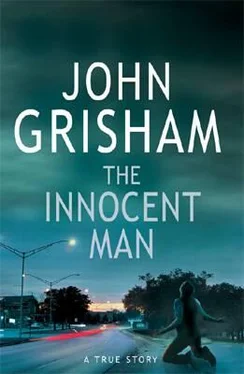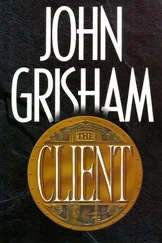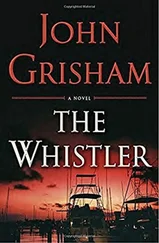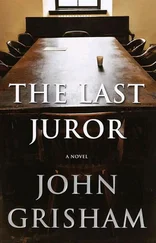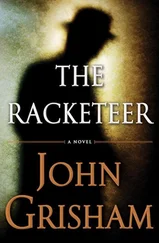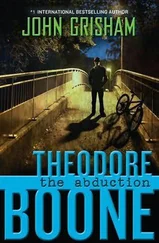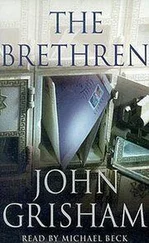This was somewhat ironic since the prison sentence being revoked was for an escape. Answering written questions from the court, Dr. Garcia said: "(1) He is a person able to appreciate the nature of the charges against him, and (2)… is able to consult with his lawyer and rationally assist in the preparation of his defense, and (3)… is no longer mentally ill, and (4)… even if he is released without treatment, therapy, or training he probably would not pose a significant threat to the life or safety of himself or others, not unless he becomes more sociopathic and may be considered potentially dangerous, especially when drinking heavily."
Ron was returned to Ada, where his revocation process was to be resumed. However, instead of holding a post-examination inquiry into his competency, Judge Miller simply accepted Dr. Garcia's findings at face value. Ron, mentally incompetent by court order, was never adjudicated to be competent. Based on Dr. Garcia's conclusions, the suspended sentence was revoked, and Ron was sent back to prison for the remainder of his two-year term. When he left Eastern State, he was given a two-week supply of Thorazine.
In September, Tommy Ward and Karl Fontenot were put on trial in Ada. Their lawyers had argued strenuously to have their cases separated and, more important, to get them out of Pontotoc County. Denice Har-away was still missing and still talked about, and hundreds of locals had helped look for her. Her father-in-law was a local dentist who was greatly respected. Ward and Fontenot had been in jail for eleven months. Their confessions had been hot topics in the coffee shops and beauty parlors since October, when first reported in the newspaper.
How could the defendants expect to draw an impartial jury? Notorious trials are moved every day to other venues. The motions to change venue were denied. The other pretrial war was over the confessions. Attorneys for Ward and Fontenot attacked the statements, and especially the methods used by Detectives Smith and Rogers to obtain them. The tales told by the boys were clearly not true; not a shred of physical evidence backed up anything they said.
Peterson fought back with a vengeance. Without the tapes, he had no case whatsoever. After lengthy and heated arguments, the judge ruled that the confessions could be seen by the jury.
The state called fifty-one witnesses, few of whom said anything substantive. Many were friends of Denice Haraway, put on the stand to help prove she was in fact missing and presumed dead. The trial had only one surprise. A career criminal by the name of Terri Holland was called as a witness. She told the jury that she was in the county jail back in October when Karl Fontenot was brought in. The two talked occasionally, and he admitted to her that he, Tommy Ward, and Odell Tits-worth had kidnapped, raped, and killed the girl.
Fontenot denied ever meeting the woman.
Terri Holland wasn't the only jailhouse snitch to testify. A petty criminal named Leonard Martin was also behind bars. The prosecution hauled him over, and at trial, he told the jury that he once overheard Karl in his cell talking to himself and saying, "I knew we'd get caught. I knew we'd get caught."
Such was the quality of the state's evidence-proof offered to persuade a jury of guilt beyond a reasonable doubt.
With no physical evidence, the taped confessions were beyond crucial, but they were filled with discrepancies and obvious lies. The prosecution was forced into the bizarre position of admitting Ward and Fontenot were lying while asking the jurors to believe them anyway.
Please disregard all that stuff about Titsworth, because he wasn't really involved.
Please overlook such trifling matters as the burned house with the dead body, because the house had been torched ten months earlier.
Monitors were rolled in. The lights were dimmed. The tapes were played. The grisly details emerged, and Ward and Fontenot were headed for death row.
In his closing argument, his first in a murder case, Assistant D.A. Chris Ross aimed for high drama. In graphic narrative, he recalled the gory details from the tapes-the stab wounds, the blood and guts, the brutal raping and knifing of such a pretty girl, then the horrible burning of her body.
The jurors were sufficiently angered. After brief deliberations, they returned with guilty verdicts and death penalties.
The truth, though, was that the body was not stabbed and it was not burned, regardless of what Ward and Fontenot said in their bogus confessions and regardless of what Bill Peterson and Chris Ross told the jury. Denice Haraway was killed by a single gunshot wound to the head. Her remains were found the following January by a hunter deep in the woods near the settlement of Gerty, in Hughes County, twenty-seven miles from Ada and far from any place that had been searched.
The true cause of death should have convinced everyone involved that Ward and Fontenot had indeed dreamed up their ridiculous tales and had been coerced into confessing. It did not.
The true cause of death should have prompted the authorities to admit they were wrong and begin searching for the real murderer. It did not.
After the trial, but before the body was found, Tommy Ward was waiting to be transferred to death row at McAlester, a prison fifty-five miles east of Ada. Still stunned by the events that had led him to now face death by lethal injection, he was frightened, confused, and depressed. One year earlier he had been a typical Ada twenty-something looking for a good job and a good party and a cute girl.
The real killers are out there, he kept thinking, laughing at us. Laughing at the cops. He wondered if they, the killers, had been brazen enough to watch his trial. Why not? They were safe.
One day he had visitors-two Ada cops. They were his friends now, his buddies, very concerned about what would happen to him once he got to McAlester. They were thoughtful, quiet, and measured with their words-no threats, yelling, or cursing, no promises of death by injection. They really wanted to find the body of Denice Haraway; thus, they offered a deal. If Tommy would tell them where she was buried, they would lobby hard over at Peterson's office and get the death sentence reduced to life. They claimed to have this authority, but did not. The case was far beyond their control.
Tommy didn't know where the body was. He repeated what he had been saying for almost a year-he had nothing to do with the crime. Now facing death, Tommy Ward still could not give the cops what they wanted.
***
Not long after the arrests of Ward and Fontenot, their story came to the attention of a respected New York journalist, Robert Mayer, then living in the Southwest. He heard the story from the woman he was dating; her brother was married to one of Tommy Ward's sisters.
Mayer was intrigued by the dream confession and the havoc it was creating. Why, he wondered, would anyone confess to a terrible crime, but fill the confession with lies? He went to Ada and began investigating the story. Throughout the prolonged pretrial process, then during the trial itself, Mayer diligently researched the town, its people, the crime, the police, the prosecutors, and especially Ward and Fontenot.
Ada watched him closely. It was rare to have a real writer in their midst, probing, watching, about to write God knows what. Over time, Mayer gained the trust of most of the players. He interviewed Bill Peterson at length. He sat through meetings with the defense attorneys. He spent hours with the cops. During one meeting, Dennis Smith talked about the pressure of having two unsolved murders in such a small town. He pulled out a photo of Debbie Carter and showed it to Mayer. "We know Ron Williamson killed her," Smith said. "We just can't prove it yet."
When Mayer began the project, he believed that there was an even chance the boys were guilty. But he was soon appalled by the actions of Smith and Rogers, and by the legal proceedings against Ward and Fontenot. There was no evidence other than the confessions, and, as shocking as they were, they were so full of contradictions that they could not be believed.
Читать дальше
